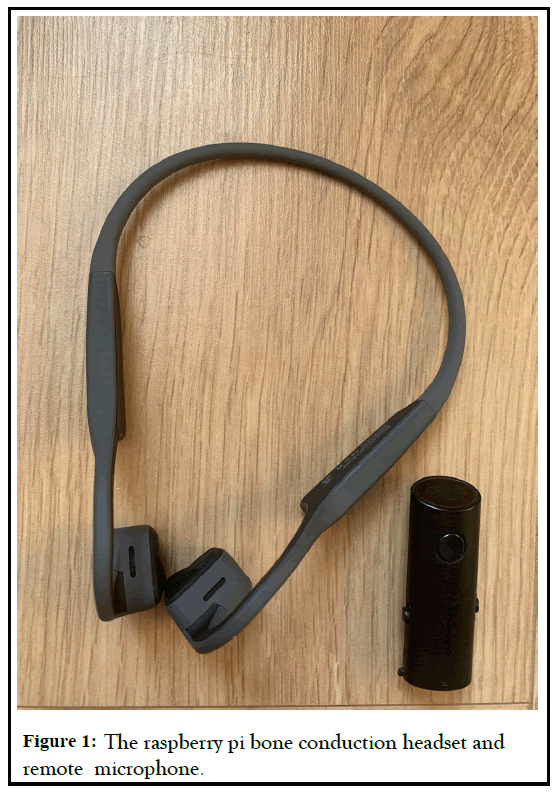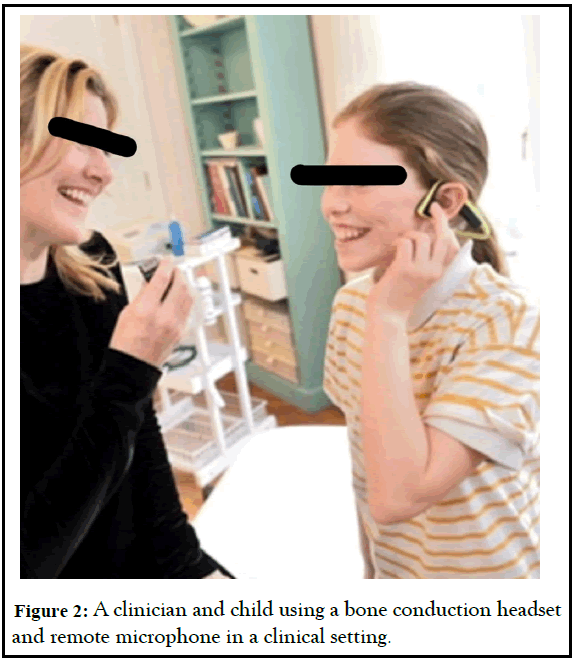
Anesthesia & Clinical Research
Open Access
ISSN: 2155-6148

ISSN: 2155-6148
Short Communication - (2021)Volume 12, Issue 6
Children undergoing anaesthetics for medical or surgical procedures need to hear to communicate, assent, consent
and understand what is happening on the day of surgery. Temporary hearing loss secondary to a condition called glue
ear (also known as Otitis Media with Effusion, OME) is common in children, affecting 80% of children at least once
before the age of 10years. Surgery (tympanostomy tubes, ventilation tubes or grommet insertion operations) to
provide a resolution for glue ear is one of the most common operations in children.
Studies show that simple, affordable headsets that work via bone-conduction (BC) technology help children with glue
ear related hearing loss. In hospitals globally, health professionals have challenges with communication whilst wearing
face masks, PPE and social distancing which impact most on patients with a hearing loss. Affordable BC headsets to
assist listening could potentially be a preoperative solution to improve communication, assent and anxiety in children
with evidence of glue ear.
Anesthetics; Brachial plexus injury; Hydrodissection; Stellate ganglion block; CRPS; Tympanostomy tube; Pediatric
Children undergoing anaesthetics for medical or surgical procedures need to hear to communicate, assent, consent and understand what is happening on the day of surgery. Children are particularly prone to temporary hearing loss. 80% of all children have experienced a condition called glue ear (also known as Otitis Media with Effusion, OME, where fluid and mucus accumulate behind the ear drum affecting the transfer of sound, often causing a mild or moderate hearing loss) at least once before the age of 10 [1]. Tympanostomy tube, TT, operations (also known as grommet insertion operations in the United Kingdom), to relieve persistent OME, is the most common operation in ambulatory children under 15 years in the United States [2].
When children arrive for their TT operations their hearing loss is most likely to be documented on their records. Local Cambridge data in 2020 [3] showed that the average hearing loss of children waiting on a grommet operation list was 25-35dB across 0.5,1, 2 and 4 KHz (range 0-65 DOB). Local data also suggested that children waiting for an intervention (with the TT operation) mostly have not been offered hearing support in the interim [3]. Therefore children with OME who have a hearing loss at the time of the operation may not have any means of hearing support during the preoperative processes.
During the COVID pandemic, health care professionals wearing face-masks, personal-protective-equipment and adhering to social distancing caused additional communication difficulties particularly for patients with hearing impairment [4].
Simple bone conduction headsets paired to a remote microphone have been shown to provide hearing support to children who have hearing loss secondary to OME [5]. This is because bone conduction headphones work by sending sound as a vibration directly to the inner hearing of the cochlear and therefore by-pass the ear drum and middle ear where the pathology or ‘glue’ is present.
Anesthetics and surgical procedures can cause anxiety for children and good preparation is known to be important, particularly for children who have difficulty hearing [6]. Play professionals, specialist nurses and age appropriate information is often provided on the day of the operation, but children arriving for TT operations (or those arriving for a different operation with incidental OME), will not be able to hear well and may not be able to benefit from preoperative preparations without hearing support. Children with glue ear particularly find it difficult to hear in background noise, such as that of a pediatric ward which “frequently exceeds 55dB” [7].
Anaesthetists, surgeons and health care professionals providing information to a child with hearing concerns should preoperatively consider using simple listening solutions for the child: One of the most affordable options being the raspberry pi bone conduction headset and remote microphone (Figure 1) which have been developed for a smaller head size and have been trialled with children who have OME aged 3 and over to allow them to hear [3].

Figure 1: The raspberry pi bone conduction headset and remote microphone.
This would provide hearing support in line with the rights of children “to be provided with disability and age-appropriate assistance” much in the same way that we would allow an adult to put on a pair of reading glasses to read and understand a consent form or put in a hearing aid to communicate with a health professional [8].
Children with hearing disabilities should not be disadvantaged during the assenting process and should be enabled to understand preoperative processes and information.
Studies show that simple, affordable headsets that work via bone-conduction technology help children with OME to hear [3,5]. In hospitals globally health professionals have challenges with communication whilst wearing face masks, PPE and social distancing which impact most on patients with a hearing loss [4].
There is a need for further research to assess the effect of a simple bone conduction headset and microphone kit in the preoperative setting (Figure 2) on hearing, anxiety levels and communication efficacy with children who have hearing loss secondary to OME.

Figure 2: A clinician and child using a bone conduction headset and remote microphone in a clinical setting.
Consent
Picture of a child who has glue ear wearing a bone conduction headset while listening to an adult who has a small remote microphone clipped to their shirt. The headset (worn by the child) and microphone (worn by the adult who is speaking) are connected by Bluetooth. (Full consent and permissions were obtained to allow reproduction and publication of this picture).
Citation: Brown TH (2021) The Future of Preoperative Assessments-Could Simple, Affordable Headphones Help Professionals Communicate with Children Preoperatively. J Anesth Clin Res. 12:1013.
Received: 02-Jul-2021 Accepted: 16-Jul-2021 Published: 23-Jul-2021 , DOI: 10.35248/2155-6148.21.12.1013
Copyright: © 2021 Brown TH. This is an open-access article distributed under the terms of the Creative Commons Attribution License, which permits unrestricted use, distribution, and reproduction in any medium, provided the original author and source are credited.